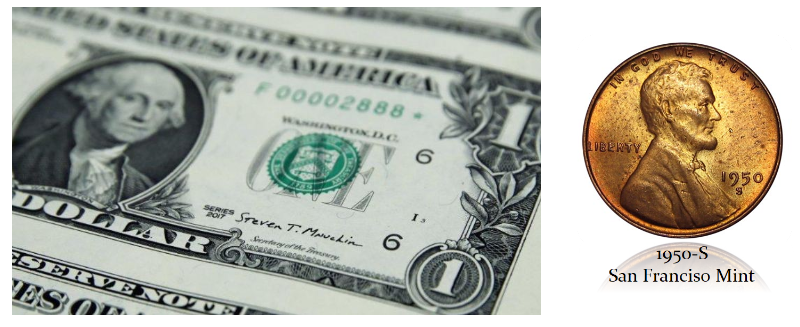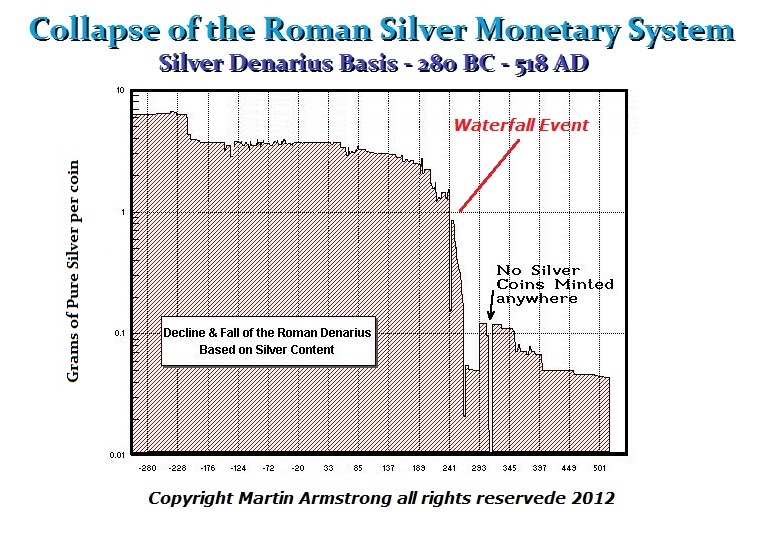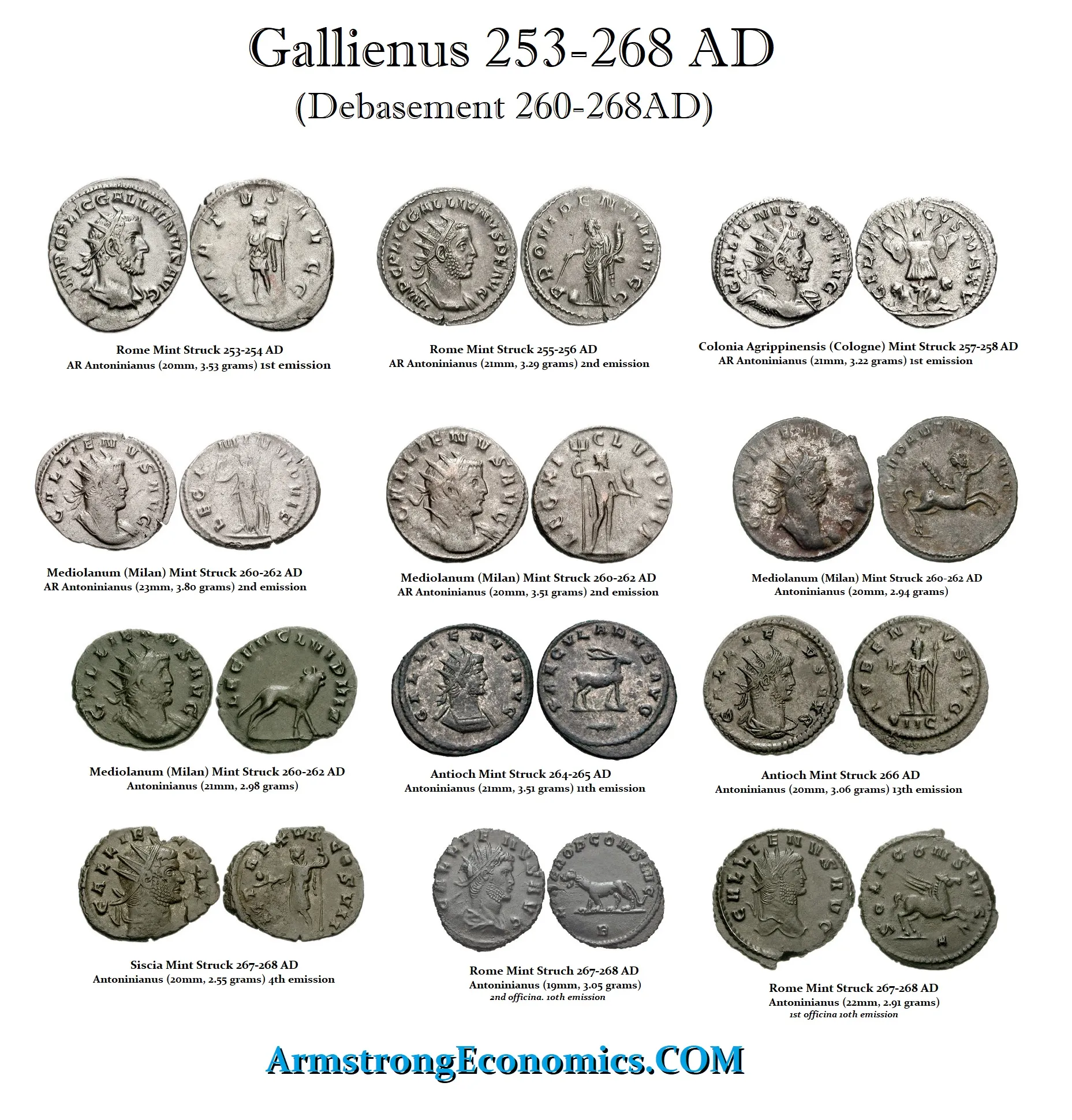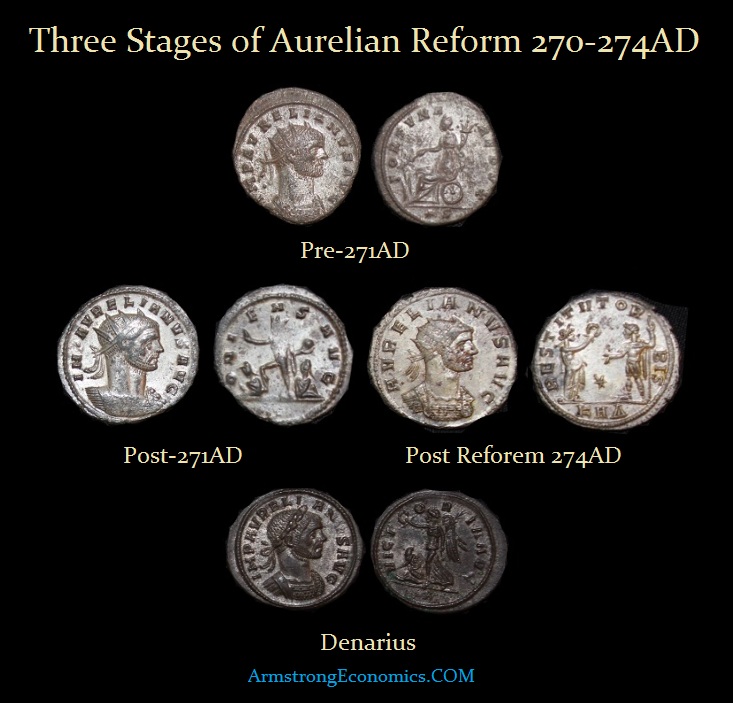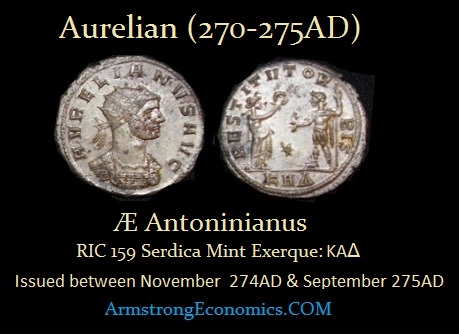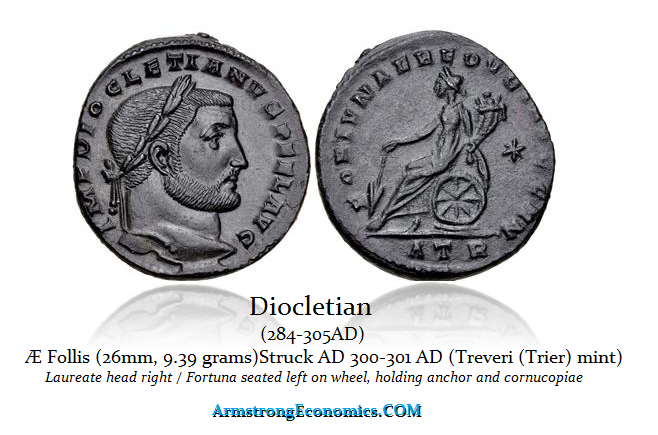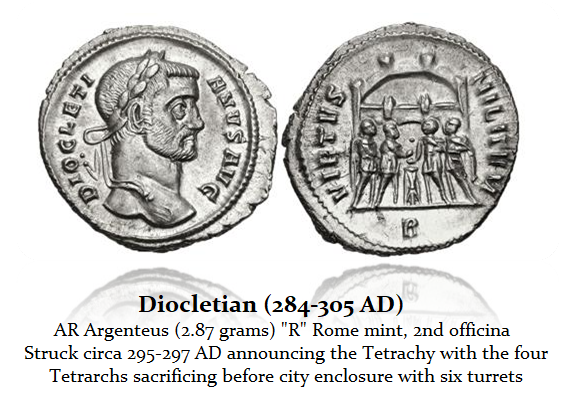Corruption inside the Deep State
History repeats because human nature never changes. During the Roman Republic, the name of the moneyer would appear on the coinage just as today the Secretary of the Treasury’s signature appears on our paper currency – i.e. Steven T. Munchin. To this day, our coins are denoted by which mint produced them – Philadelphia, Denver, or San Francisco.
The collapse of the monetary system following the capture of Emperor Valerian I in 260AD by the Persians, set off a collapse in public confidence whereby the people suddenly saw Rome as vulnerable. What is fascinating is that the “hyperinflation” of Rome which took place in just 8.6 years, was aided by the corruption within the Deep State of the Roman Empire. This raises the question: We will see the same thing take place during our final 8.6 years into 2032 which begins by May 2024. The debasement of the coinage was NOT on the decree of the Emperor. This was the greed of those in the Deep State.
Following the assassination of Emperor Gallienus, that is when Claudius II came to power and the debasement reached it lowest point during his reign. The Goths invaded Rome and brought the plague with them from the East. Emperor Claudius II died of the plague. Claudius’s brother, Quintillus tried to succeed him, but Aurelian and his troops marched against him. His troops deserted him and he committed suicide.
Therefore, Aurelian became emperor in 270 AD and he returned to Rome in 271 AD, where he had to pacify a terrified city. He immediately halted the rioting and restored order to the capital. The controller of the mint in Rome began a rebellion over the monetary reforms laid out by Aurelian. He ordered that all the debased currency be purchased back and replaced with a new currency of higher content in silver. The rebellion was led by Felicissimus. It appears that those who had been running the mint were embezzling the intended silver and issuing the debased coinage at least in part on their own authority.
Obviously, any reform to the monetary system that called for an increase in silver content would have been unprofitable for those running the mint for personal gain. In the rebellion, as many as 7,000 soldiers died when Aurelian was forced to trap and execute them and their allies, some of the senatorial ranks, in a terrible battle on the Caelian Hills. Thereafter, Aurelian then introduced mintmarks to identify if any mint was cheating the silver content.
When Diocletian (284-305AD) reorganized the coinage when he came to power as well as the political structure of the Roman Empire. With respect to politics, he divided the empire in two creating two emperors with their eventual successors given the rank of Caesar. This became the Tetrarchy.
The monetary reform introduced the new bronze coinage silver plated known as the follis terminating the radiate antoninianus which had begun as a double denarius during the reign of Caracalla (198-217AD). Diocletian required each mint to engrave their coins with an identifiable mint mark, and also letters or marks to indicate the individual workshops (officina) within the mints. Thereby, any collusion to debase the coinage would be identifiable to a specific group within each mint.
Each mint mark from Diocletian onwards consists of a group of letters identifying the mint (normally in the exergue) and usually (but not always) letter(s) and/or mark(s), sometimes in the exergue, sometimes in the field, These identified the individual workshop within the mint. In the West, workshops were numbered either in Latin numerals I, II, III or in the initial letters of Latin ordinals such as P(rimus), S(ecundus), T(ertius). The problem with Latin surfaced when trying to distinguish between S(ecunda) and S(exta) or between Q(uarta) and Q(uinta). They had to develop in the West a mixed system of Greek and Latin to give P(rima), B, T(ertia), Q(uarta), E, and S(exta) valid meanings. Western mints sometimes used the Greek system at varying times.
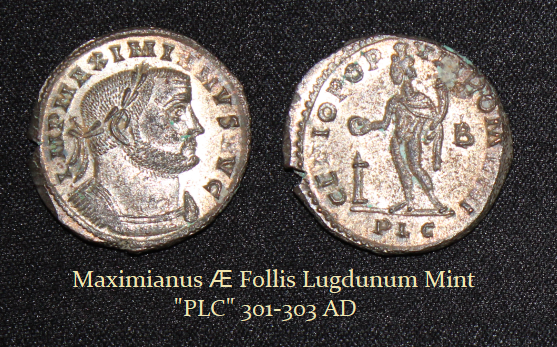 Here we can see a silver Argentius (2.87 grams) with the “R” Roman mint mark. Lugdunum used “PL” for their mint mark as illustrated by this follis of Maximianus – Diocletiuan’s co-emperor.
Here we can see a silver Argentius (2.87 grams) with the “R” Roman mint mark. Lugdunum used “PL” for their mint mark as illustrated by this follis of Maximianus – Diocletiuan’s co-emperor.
History repeats because
HUMAN NATURE NEVER CHANGES
The post Corruption inside the Deep State first appeared on Armstrong Economics.
